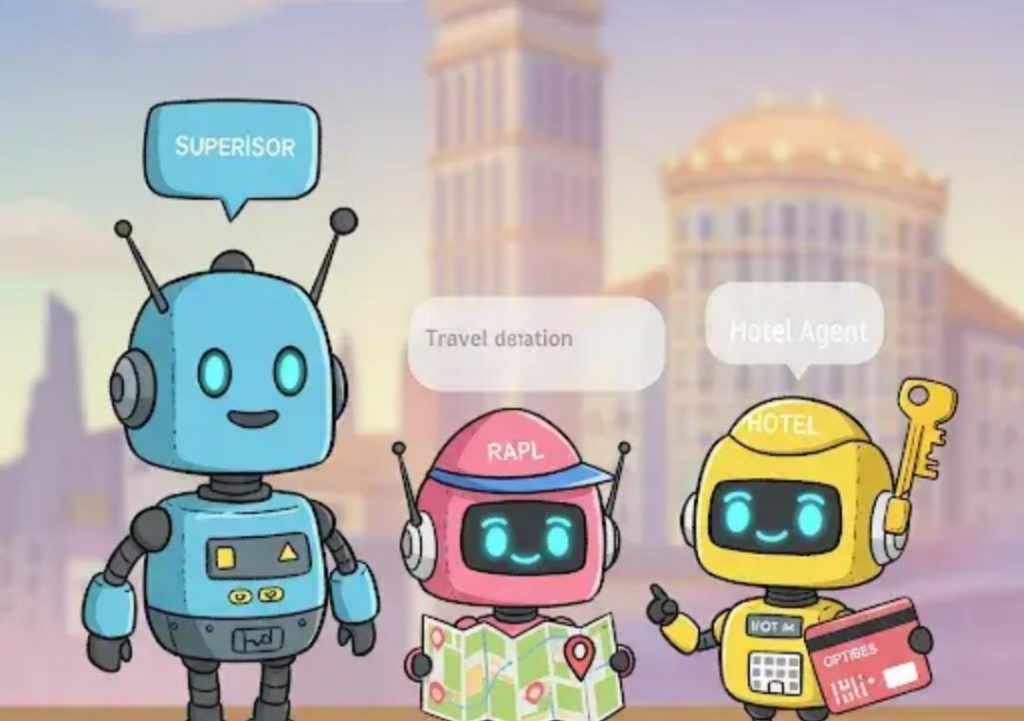
Multi-agent collaboration mimics real team dynamics
In recent years, artificial intelligence (AI) has revolutionized the way we approach various tasks, from data analysis to customer service. However, relying on a single AI agent to accomplish complex tasks can be limiting. What if we could deploy a team of AI agents, each with its own strengths and specializations, to work together seamlessly? This is where multi-agent systems come in – a cutting-edge approach that mirrors human teamwork, but at machine speed and scale.
The benefits of multi-agent systems
In traditional AI, a single agent is responsible for completing a task from start to finish. While this approach can be effective, it has several limitations. For instance, a single agent may not possess the necessary expertise or resources to tackle a complex task. Additionally, AI agents can become overwhelmed by the sheer volume of data or tasks, leading to decreased performance and accuracy.
Multi-agent systems, on the other hand, offer a more modular and scalable approach. By deploying multiple agents with distinct specializations, you can create a team that can tackle complex tasks from multiple angles. Each agent can focus on its specific strengths, allowing the team to work more efficiently and effectively.
How multi-agent systems work
In a multi-agent system, each agent is designed to perform a specific task or set of tasks. These agents can communicate with each other, share information, and collaborate on tasks to achieve a common goal. This modular setup allows for greater flexibility and adaptability, as agents can be easily added or removed as needed.
Imagine a research project, where one agent is responsible for data collection, another for data analysis, and a third for reporting the findings. Each agent can work independently, but also communicate with each other to ensure that the project is completed efficiently and accurately.
Key components of a multi-agent system
For a multi-agent system to be effective, several key components must be in place. These include:
- Agents: Each agent is responsible for performing a specific task or set of tasks. Agents can be designed to be autonomous, semi-autonomous, or fully controlled by a human operator.
- Communication protocols: Agents must be able to communicate with each other effectively, using standardized protocols and languages.
- Task allocation: The system must be able to allocate tasks to the most suitable agents, based on their capabilities and expertise.
- Conflict resolution: Agents may encounter conflicts or inconsistencies during their interactions. The system must be able to resolve these conflicts and ensure that the team works towards a common goal.
- Monitoring and control: The system must be able to monitor and control the agents’ performance, adjusting their behavior as needed to ensure optimal results.
Real-world applications of multi-agent systems
Multi-agent systems have been successfully applied in a wide range of industries and domains, including:
- Healthcare: Multi-agent systems can be used to analyze medical images, diagnose diseases, and develop personalized treatment plans.
- Finance: Agents can be used to analyze financial data, identify trends, and make investment decisions.
- Manufacturing: Multi-agent systems can be used to optimize production workflows, manage supply chains, and improve quality control.
- Customer service: Agents can be used to analyze customer data, identify patterns, and provide personalized support.
Challenges and limitations
While multi-agent systems offer many benefits, there are also several challenges and limitations to consider. These include:
- Complexity: Multi-agent systems can be complex and difficult to design, implement, and maintain.
- Scalability: As the number of agents increases, the system can become difficult to manage and optimize.
- Communication: Agents must be able to communicate effectively, which can be challenging in complex systems.
- Coordination: Agents must be able to coordinate their actions to achieve a common goal, which can be difficult in dynamic and uncertain environments.
Conclusion
Multi-agent systems offer a powerful approach to AI development, allowing for greater flexibility, adaptability, and scalability. By deploying a team of AI agents, each with its own strengths and specializations, you can create digital workflows that mirror human teamwork, but at machine speed and scale. While there are challenges and limitations to consider, the benefits of multi-agent systems make them an exciting and promising area of research and development.



